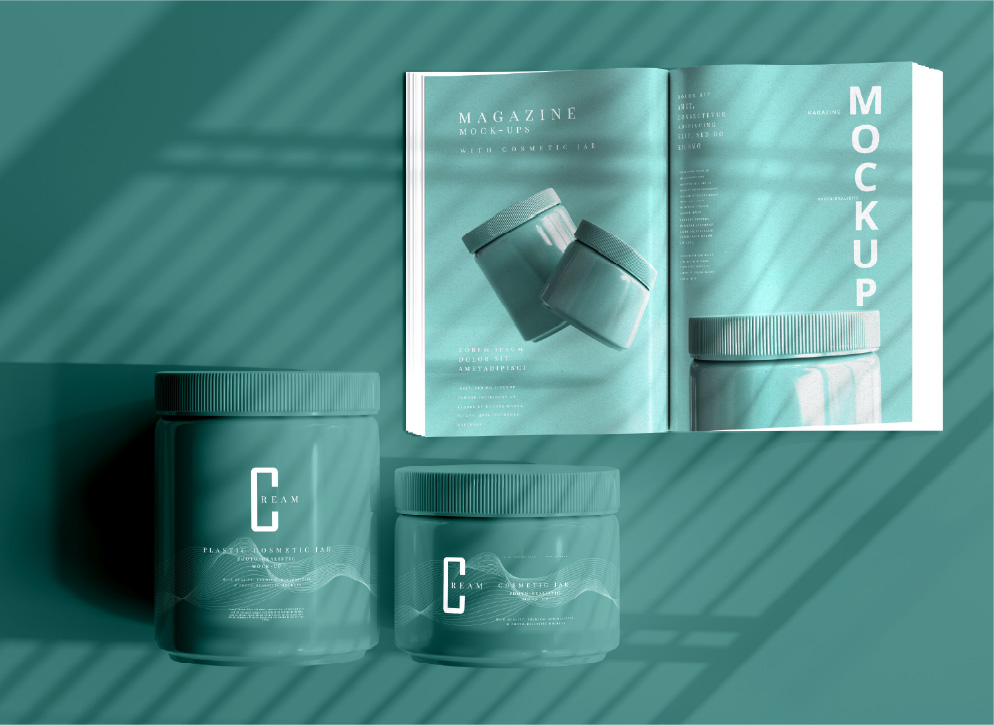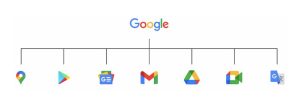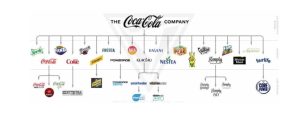
What is brand, really?
What is brand, really?
What comes to your mind the moment you come in contact with your favourite brand? Memories of your first experience using their product? Product quality? That time you needed help and their customer service was fantastic? Their social impact?
If you answered yes to any of the above, you’re already feeling the impact of great branding. Branding is the process of creating a strong, positive perception of your company and its products in your customers’ minds. So it goes beyond just the logo and colour, even though they’re essential parts of branding.
Branding also involves the design, tone of voice, story, culture, values, and other elements that distinguish your company from its competitors and makes it identifiable. As Jeff Bezos, the founder of Amazon, describes it, “Your brand is what people say about you when you’re not in the room”.
Branding is your why.
Marketing is your how.

What is a brand good for?
What is a brand good for?
What is a brand good for?
 Your brand: the ultimate tool for growth and decision making
Your brand: the ultimate tool for growth and decision making
A well-developed brand is like a blueprint for your business. When you’re in the thick of things, it can be easy to make choices that feel appealing at any given moment. But when it comes to making business decisions, trusting your gut can lead you down a path to inconsistency and confusion.
Whether you’re playing with ideas for a marketing campaign or wondering whether an influencer would be a good partner for you, your brand is the source of truth you can turn to when you need to answer stylistic questions like:
Is this messaging consistent with our tone of voice?
Does this copy sound like us?
Does this design look like us?
As well as less tangible but equally important questions like:
Does this influencer align with our brand values?
Will the concept of this marketing campaign make sense to our audience?
Will this partnership help us grow in a way that is meaningful to us?

Why your purpose and values are good business tools
Knowing your brand values is a crucial aspect of building a successful business for several reasons:
1Clarity and direction

Clarity and direction
Having a clear understanding of your brand values helps you make decisions that align with your brand’s purpose and goals. This provides a sense of direction and helps you prioritise your actions in a consistent manner.
2Differentiation

Differentiation
Your brand values help to differentiate you from your competitors and make your brand stand out. By having a clear set of values, you can communicate what sets your brand apart and what makes it unique.
3Customer loyalty

Customer loyalty
Customers are more likely to be loyal to brands that they perceive as authentic and genuine. By aligning your actions and decisions with your brand values, you can build trust and a strong emotional connection with your customers.
4Employee engagement

Employee engagement
Your brand values can also serve as a guide for employees, helping them understand the company’s purpose and how their work contributes to the overall mission. This can lead to increased engagement and motivation among employees.
5Consistency

Consistency
Consistency is key in building a strong brand, and having a clear set of brand values can help ensure that all aspects of your business, from your products and services to your customer service and marketing, are consistent with your brand’s overall message and identity.

Overall, having a deep understanding of your brand values and incorporating them into all aspects of your business can help you build a strong, authentic, and differentiated brand that resonates with your customers and stakeholders.
Does your brand need a revamp?
Mention this ebook for a special offer 30-minute brand consultation and audit FREE when we chat.
Let’s see where you stand!
 B2B VS B2C VS NFP Branding
B2B VS B2C VS NFP Branding
Although the fundamental ideas and foundational steps in branding hold true across all industries and all organisations will benefit from focusing on clearness, consistency and clarity, there are still differences between branding for B2B, B2C, and nonprofits.
faceB2B Branding
- The messaging and marketing tactics used in B2B branding often emphasise the company’s expertise, experience, and the results it has achieved for other clients.
- The decision-making process for purchasing B2B products is often more complex and involves multiple stakeholders, so B2B branding may need to be more tailored to specific segments or industries.
faceB2C Branding
- Focuses on creating an emotional connection with individual consumers, who make purchasing decisions based on personal preferences and lifestyle.
- The messaging and marketing tactics used in B2C branding often highlight the benefits of the product or service and how it can make the customer’s life easier, more enjoyable, or more fulfilling.
- Often more creative and focuses on establishing a unique personality and image for the brand.
faceNFP Branding
- NFP branding is focused on building support and awareness for a specific cause or mission, rather than promoting a product or service.
- The messaging and marketing tactics used in NFP branding often aim to educate the public and build a sense of community around the cause.
- NFP branding often has a more personal and emotional tone, and may rely on storytelling and testimonials to convey the impact of the organisation’s work.

Brand Components & Management
Brand Components & Management
 The branding process is very in-depth and requires careful research and consideration. The ultimate goal is always to communicate who you are as a business and build relationships with your audience. It’s best to always start the branding process with brand strategy to figure out what you want to say and who you’re talking to. Then, you can roll out your brand fundamentals to your visual and verbal branding, creating brand guidelines to help keep everybody in your business on the same page.
The branding process is very in-depth and requires careful research and consideration. The ultimate goal is always to communicate who you are as a business and build relationships with your audience. It’s best to always start the branding process with brand strategy to figure out what you want to say and who you’re talking to. Then, you can roll out your brand fundamentals to your visual and verbal branding, creating brand guidelines to help keep everybody in your business on the same page.
Visual Branding
Visual branding covers all the elements that communicate your values and personality. When a person engages with your brand, the visual elements make a subconscious impression in a matter of seconds. That person will then seek visual validation or confirmation at every point of contact. The essential components of your visual branding include your brand mark or logo, colour palette, typography, imagery, and graphic elements.
Verbal Branding
Often overlooked or misunderstood, verbal branding covers both what you say and how you say it. It can include your product or service names, taglines and straplines, your tone of voice, and your messaging strategies. Your verbal branding will also include a style guide that includes your grammatical preferences, vocabulary, cadence, use of emojis, sense of humour, and so on.
Brand Guidelines
Your brand strategy, verbal, and visual branding should all live in one easy to find place. That document is called your brand guidelines and they’re the ultimate source of truth for any questions or uncertainties anyone has around your brand.

Let's take a closer look!

Where to be consistent & where to let loose
Back in the day, brands would craft a single set of communication guidelines which were to be applied globally with ruthless consistency. Today, with the plethora of channels available, that approach doesn’t work anymore. That being said, it’s good to have some clarity on when, where, and how to bend the rules.
Your organisation’s tone on LinkedIn, for example, will likely be quite professional. Your tone on Instagram or TikTok should be much more casual, and your tone in your emails could go either way, depending on your audience and your goals.

Signs it’s time for a brand refresh
A brand isn’t a static thing. It’s organic and should grow and shift over time as your business does. If you’re not sure whether it’s time to update your brand, here are some signs it could be time:
- Your brand doesn’t reflect your values
- Your brand is expanding
- Your brand is inconsistent
- You don’t have a style guide, or it doesn’t get used because it’s not appropriate
- You don’t stand out from your competitors
- Your packaging is outdated
- Your brand messaging isn’t compelling or consistent
Does your brand need a revamp?
Mention this ebook for a special offer 30-minute brand consultation and audit FREE when we chat.
Let’s see where you stand!
Brand Architecture
Brand Architecture
 The branding process is very in-depth and requires careful research and consideration. The ultimate goal is always to communicate who you are as a business and build relationships with your audience. It’s best to always start the branding process with brand strategy to figure out what you want to say and who you’re talking to. Then, you can roll out your brand fundamentals to your visual and verbal branding, creating brand guidelines to help keep everybody in your business on the same page.
The branding process is very in-depth and requires careful research and consideration. The ultimate goal is always to communicate who you are as a business and build relationships with your audience. It’s best to always start the branding process with brand strategy to figure out what you want to say and who you’re talking to. Then, you can roll out your brand fundamentals to your visual and verbal branding, creating brand guidelines to help keep everybody in your business on the same page.

When do you need a sub-brand?
Branding is all about creating trust and building a reputation. Trying to include too many things ruins all the hard work you’ve done so far.

Read this before launching a sub-brand
11
1
First, identify your target audience and do some research into what kinds of products, services and personality traits they associate with your brand already.
DOES THE NEW OFFERING ALIGN?
22
2
Next, run a competitive analysis to understand the demand in the market.
IS THERE SUFFICIENT DEMAND IN THE MARKET FOR A NEW BRAND?
33
3
Don’t forget to honestly assess your internal landscape. You’ll need creative, strategic, and financial resources, as well as stakeholder buy-in.
DO YOU HAVE THE RESOURCES AVAILABLE TO BUILD AND MAINTAIN A SUB BRAND?
44
4
Compare your new venture to your current offerings. A new sub brand with a similar product or service will dilute your previous efforts. It’s only worth launching a sub brand to capture a different market segment if the market segment is vastly different from your current audience and there’s sufficient appetite in the market.


Questions to ask yourself:
- Will the new offer easily fit within your current brand?
- How complex is the new offer? Will it need its own language guidelines? Will it need its own visual guidelines?
- Which structure suits your resources, needs, and offering the best?
- Could this sub-brand pose any risk to the parent brand?
 Entropy: the tendency of ordered systems to revert to chaos if left unattended.
Entropy: the tendency of ordered systems to revert to chaos if left unattended.
It’s also your organisation’s worst enemy.
As your organisation grows, merges, and acquires, a clear brand architecture is crucial for long term viability (and profitability). But what exactly is brand architecture, why is it so important, and how do you know which one to use?

Brand architecture refers to the way a company organises its brand and sub brands. There are a number of ways to do it, each suitable for different contexts, and with its own benefits and drawbacks.
Getting your brand architecture right comes with a host of benefits:
The three most common structures are:
A Branded House
A Branded House is the most common structure. It involves a parent brand with smaller sub brands clustered underneath it.
Google is the perfect example of this, with the search engine at the top, and all the various extra sub brands underneath. It’s important to note that with a Branded House architecture, each sub brand retains the flavour of the main brand, despite each sub brand having its own unique messaging components.

Pros
There’s a reason the Branded House is the most popular structure to use. It’s efficient.
Creating and maintaining a recognisable brand takes time and resources. A Branded House means you don’t have to start from scratch when you expand and allows your brand to evolve. The more rapport you have with your audience, the more easily they’ll adapt when you offer new things.
Cons
On the other hand, a Branded House means the reputations of all your brands are interlinked. If you get some bad publicity for one of them, that negativity can easily spread to the rest of them. Conversely, an incredible product may be dragged down if the mother brand isn’t strong or relevant enough.
A House of Brands
Branded House and House of Brands might sound deceptively similar, but the truth is they’re almost exactly opposite. Where
a Branded House is a group linked by common branding, a House of Brands is a group of independent brands owned by a single company, each with unique branding, marketing, and audience. P&G is the perfect example of this, with Pampers, Herbal Essences, Fairy, and Gillette in their house, to name a few.

Pros
A House of Brands strategy allows for offering a diverse range of products and services without the concern of overlap. By dedicating the necessary resources to develop distinct brands, it becomes possible to connect with multiple precise target audiences. Additionally, the reputations of both the organisation and individual brands remain secure in the event that any one of the brands develops negative associations. This approach is especially prevalent
in the FMCG sector, where it enables companies to produce numerous competitive products.
Cons
The drawback? Resourcing.
Think of all the time, money and effort that goes into creating and maintaining a brand. Now multiply that by however many individual brands you have. That’s what you’re facing with a House of Brands.
Multiple independent brands can quickly become overwhelmingly expensive, difficult to manage, and difficult to police within your organisation. The power of the parent brand also doesn’t do anything to bolster the reputation of the sub-brands.
A Hybrid Model
If neither of the above structures feels right, you might consider a hybrid of the two. Coca- Cola is a perfect example of a successful Hybrid structure. There’s Coke, Diet Coke, Coke Zero, and so on- set up like a Branded House. The Coca Cola Company also owns 25 other brands, including Sprite, Fanta, Powerade, Mount Franklin, and more.

Pros
A hybrid brand structure combines the strengths of both a house of brands and a branded house. The strong master brand provides clarity and consistency to customers while individual sub brands enable organisations to differentiate
and appeal to specific customer segments.
This approach provides flexibility to adjust the product portfolio as needed, while also enabling experimentation with new product lines. It allows for targeted marketing, which permits
a more personalised approach to different customer segments.
Cons
However, it can also be complex to manage and requires significant resources and expertise. If not managed effectively, it can result in brand dilution, reduced trust among customers, and cannibalization.
Branding vs Marketing
Branding vs Marketing
 By now, you’ll have a thorough understanding of what branding is. To conclude, let’s compare Branding to Marketing.
By now, you’ll have a thorough understanding of what branding is. To conclude, let’s compare Branding to Marketing.

Branding
Branding is a process that is geared toward establishing a company’s identity, voice, personality traits and values.

Marketing
Marketing consists of the tools you utilise to spread awareness, and deliver your brand’s message.
While branding is more concerned with ethereal concepts such as feelings and emotions, marketing is a results driven strategy that seeks to engage customers, generate leads and drive sales. Your brand may evolve over time as your business, offerings and audience shift. Marketing methods can change swiftly year-to-year, regardless of whether your brand changes or not. Just as your business’s products might change over time to cater to your customer’s needs, your marketing methods will transform as well.

Still, both are essential for businesses. Most importantly, the two are interlinked and largely support each other.
Common practice is to tackle branding first and then implement marketing tactics. While you could execute marketing with a few taglines and keyword trends, you won't experience as much success as if you establish a strong foundation for your brand.
Further, it's helpful to think of branding as an ongoing daily practice. Contrary to some misconceptions, branding is not something you come up with initially and then just leave on the shelf.
It is a continuous and thoughtful practice to stay relevant, unique and keep customers coming back for more. We can think of branding as a marathon, and marketing as a sprint.
Brands last forever. They serve to cultivate customer loyalty and keep customers coming back, year after year, generation after generation. Marketing is equally as important, but ebbs and flows with its approach and use of various tools.
We can help you
Ready to build, expand, or refresh your brand?

